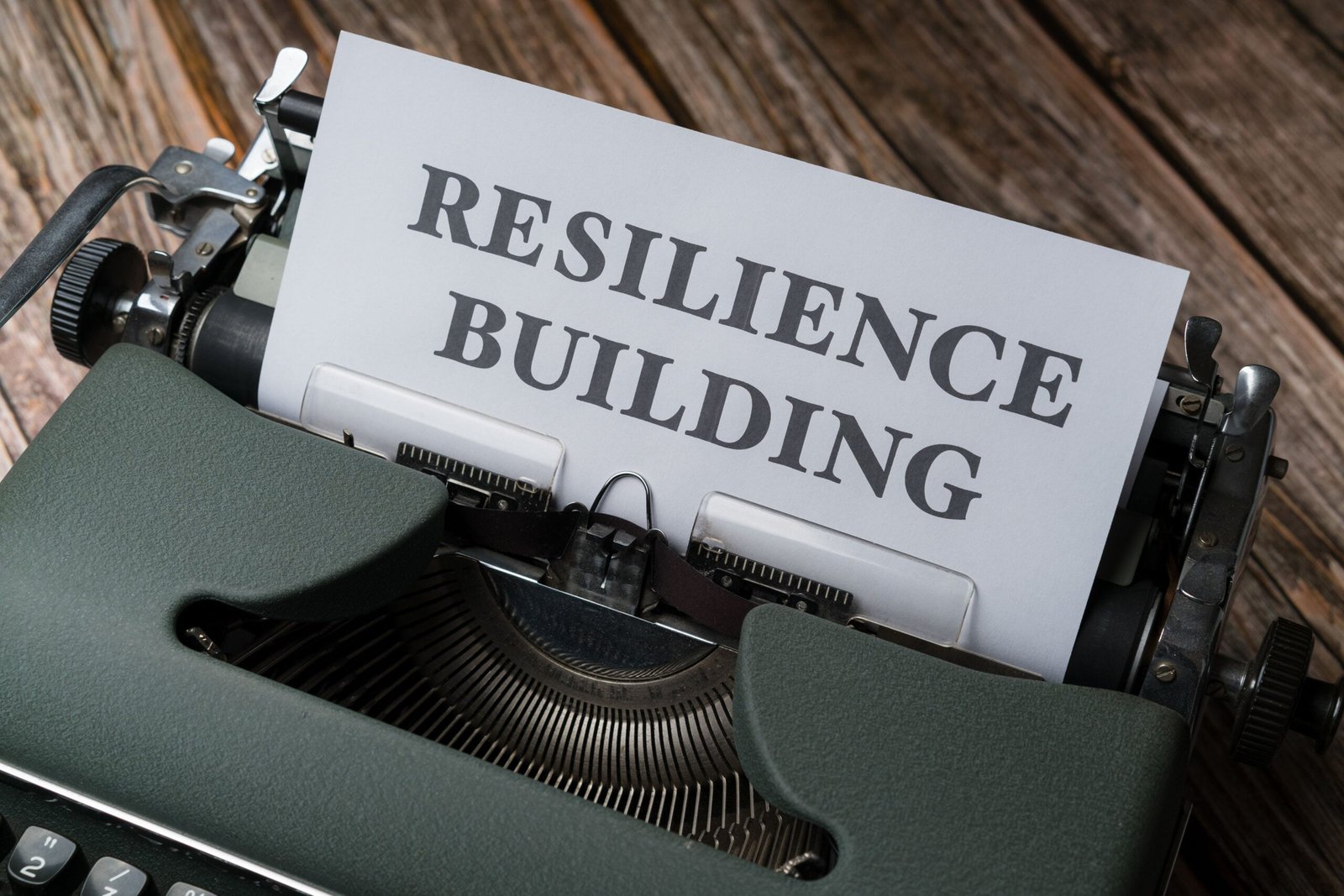In a world where digital devices and constant connectivity have become part of our daily lives, it can be all too easy to fall into the trap of digital addiction. However, there are effective ways to build resilience against this modern affliction and regain control over our digital habits. By setting boundaries, practicing mindful device usage, and cultivating offline activities, you can develop the resilience needed to strike a healthy balance between the digital world and the real one.
Set Clear Boundaries
Determine Digital Use Limits
Setting clear boundaries on your digital use is essential in building resilience against digital addiction. Start by assessing how much time you currently spend on digital devices and determine a daily limit that works for you. This could be a specific number of hours or allocating designated time slots for digital activities. By defining these limits, you will be able to create a healthier relationship with technology and prevent excessive use.
Establish Device-Free Zones and Times
Another effective way to build resilience against digital addiction is to establish device-free zones and times in your life. Designate certain areas or rooms in your home where the use of digital devices is not allowed, such as the bedroom or mealtime areas. Additionally, set specific times during the day where you refrain from using digital devices altogether, such as during meals or in the hour before bedtime. By creating these device-free zones and times, you can prioritize offline activities and promote a healthier balance between the virtual and physical world.
Practice Mindful Digital Engagement
Mindful digital engagement is a powerful tool in building resilience against digital addiction. It involves being fully present and consciously aware of your digital interactions. Instead of mindlessly scrolling through social media or getting caught up in endless online activities, practice being intentional with your digital use. Ask yourself if the time spent online aligns with your values and priorities. Focus on meaningful interactions, limit distractions, and avoid getting sucked into the endless cycle of information overload. By practicing mindful digital engagement, you can regain control over your digital habits and build resilience against addiction.
Develop Healthy Habits
Engage in Physical Activities
Engaging in physical activities is not only beneficial for your overall well-being but also plays a crucial role in building resilience against digital addiction. Regular exercise not only helps you stay physically fit but also releases endorphins that boost your mood and reduce the desire to constantly rely on digital devices. Find activities that you enjoy, whether it’s jogging, dancing, or playing a sport, and incorporate them into your daily routine. By prioritizing physical activities, you can enhance your resilience and reduce the urge to rely on excessive digital use for fulfillment.
Practice Relaxation Techniques
Incorporating relaxation techniques into your daily routine can significantly contribute to building resilience against digital addiction. Techniques such as deep breathing exercises, yoga, or mindfulness meditation can help you manage stress, improve focus, and promote a sense of calmness. Dedicate a specific time each day to engage in these practices, even if it’s just a few minutes. As you cultivate a habit of incorporating relaxation techniques into your life, you will develop greater resilience and find it easier to disconnect from the digital world when needed.
Get Sufficient Sleep
Quality sleep is essential for overall well-being and building resilience against digital addiction. Lack of sleep can negatively impact your mental and physical health, making it more challenging to resist the temptation of excessive digital use. Aim for at least seven to eight hours of uninterrupted sleep each night, and establish a consistent sleep routine. Avoid using digital devices close to bedtime and create a peaceful sleep environment free from distractions. By prioritizing sleep, you will enhance your ability to regulate your digital habits and build greater resilience.

Cultivate Offline Connections
Prioritize Face-to-Face Interactions
In the age of digital connectivity, it’s important to prioritize face-to-face interactions to build resilience against digital addiction. Make a conscious effort to spend quality time with friends, family, and loved ones in person. Engage in activities that promote meaningful connections, such as having meals together, going for walks, or participating in group activities. By fostering these personal connections, you can find fulfillment in offline experiences and reduce the need for constant digital stimulation.
Join Clubs or Groups
Joining clubs or groups that align with your interests and passions is an effective way to build resilience against digital addiction. Whether it’s a book club, sports team, or hobby group, these offline communities provide an opportunity for social interaction and engagement. By immersing yourself in these activities, you can cultivate meaningful offline connections, discover new interests, and reduce reliance on digital devices for entertainment.
Volunteer or Engage in Community Activities
Volunteering or engaging in community activities is not only a wonderful way to give back but also a powerful strategy to build resilience against digital addiction. Find local organizations or initiatives that resonate with your values and contribute your time and skills. By actively participating in community activities, you will create a sense of purpose, connect with like-minded individuals, and reduce the urge to constantly seek digital stimulation.
Strengthen Self-Awareness
Identify Triggers and Patterns
Building resilience against digital addiction requires self-awareness and understanding of your triggers and patterns. Take the time to reflect on the situations, emotions, or circumstances that lead to excessive digital use. Are there specific apps or activities that trigger your urge to spend more time online? Are there certain emotions, such as stress or boredom, that drive you to seek digital distractions? By identifying these triggers and patterns, you can develop strategies to navigate them and build resilience.
Reflect on Emotional and Mental States
Reflecting on your emotional and mental states is essential in building resilience against digital addiction. Take regular breaks throughout the day to check in with yourself and observe how you are feeling. Are you using digital devices as a coping mechanism for stress or anxiety? Are there underlying emotional issues that drive you to seek digital distractions? By cultivating self-awareness, you can recognize when you are using digital devices as an escape and develop healthier coping mechanisms.
Use Mood Tracking Apps or Journals
Using mood tracking apps or journals can be helpful in building resilience against digital addiction. These tools allow you to document your emotional states and identify patterns over time. By keeping track of your mood and digital behavior, you can gain insights into how your emotional well-being is correlated with your digital use. This awareness can help you make more informed choices about your digital habits and develop greater resilience.

Implement Digital Detoxes
Designate Regular Screen-Free Periods
Implementing regular screen-free periods is a powerful way to build resilience against digital addiction. Set aside specific times during the day or week where you completely disconnect from digital devices. Use this time to engage in offline activities, connect with others, or pursue hobbies and creative pursuits. By regularly detoxing from screens, you can break the cycle of constant digital stimulation and cultivate a healthier relationship with technology.
Plan Device-Free Getaways
In addition to regular screen-free periods, planning device-free getaways is another effective strategy to build resilience against digital addiction. Take intentional breaks from the digital world by going on vacations or weekend getaways where digital devices are not allowed or kept to a minimum. Use this time to immerse yourself in nature, connect with loved ones, or engage in activities that bring you joy. By intentionally disconnecting from technology, you can restore your mental and emotional well-being and build resilience against addiction.
Engage in Hobbies or Creative Pursuits
Engaging in hobbies or creative pursuits is a constructive way to build resilience against digital addiction. Explore activities that you genuinely enjoy and make time for them regularly. Whether it’s painting, playing an instrument, gardening, or cooking, these offline pursuits provide a sense of fulfillment and purpose. By channeling your energy towards productive and enjoyable activities, you can reduce reliance on digital devices for entertainment and develop greater resilience.
Practice Digital Minimalism
Declutter Digital Spaces
Practicing digital minimalism involves decluttering your digital spaces to reduce overwhelm and foster resilience against digital addiction. Start by organizing your digital files, deleting unnecessary apps, and clearing out your inbox. Create a streamlined digital environment that is free from distractions and promotes focus. By decluttering your digital spaces, you can create a sense of calmness and reduce the temptation to mindlessly consume online content.
Uninstall Unnecessary Apps
Uninstalling unnecessary apps is an essential step in practicing digital minimalism and building resilience against digital addiction. Take inventory of the apps on your smartphone, tablet, or computer and ask yourself if they are truly necessary for your daily life. Remove apps that contribute to mindless scrolling or excessive digital use. By simplifying your digital device, you can eliminate distractions and regain control over your digital habits.
Disable Notifications
Disabling notifications is another important aspect of digital minimalism. Constant notifications can disrupt your focus and contribute to compulsive checking of your digital devices. Take the time to review your notification settings and disable notifications for non-essential apps or platforms. By minimizing distractions, you can create a more mindful digital experience and build resilience against addiction.

Seek Support
Talk to Friends and Family
Seeking support from friends and family is crucial in building resilience against digital addiction. Reach out to trusted individuals in your life and talk openly about your challenges and goals. Share your desire to build healthier digital habits and ask for their support and understanding. Having a support system that encourages and holds you accountable can greatly enhance your resilience.
Join Support Groups or Therapy Sessions
Joining support groups or therapy sessions can provide invaluable guidance and assistance in building resilience against digital addiction. Look for local support groups or online communities that focus on digital well-being and connect with individuals who share similar struggles. Additionally, consider seeking professional help through therapy or counseling. A trained therapist can provide tailored strategies and support to help you overcome addiction and build the resilience you need.
Consider Professional Help
If digital addiction significantly impacts your daily life and self-imposed strategies aren’t enough, consider seeking professional help. Addiction therapists and counselors specialize in helping individuals overcome addiction and develop resilience. They can offer expert guidance, personalized treatment plans, and ongoing support to help you regain control of your digital habits and build a healthier relationship with technology.
Develop Time Management Strategies
Set Priorities and Goals
Developing effective time management strategies is essential for building resilience against digital addiction. Start by setting clear priorities and identifying your long-term goals. By clarifying what truly matters to you, you can allocate your time and energy accordingly. Create to-do lists, set deadlines, and break down tasks into manageable steps. By structuring your time and prioritizing tasks, you can reduce the chance of falling into the trap of excessive digital use.
Utilize Productivity Tools or Apps
Utilizing productivity tools or apps can greatly assist in building resilience against digital addiction. There are various apps and tools available that can help you stay organized, track your time, and set reminders for important tasks. Find the ones that work best for you and incorporate them into your daily routine. These tools can enhance your productivity and minimize the time spent on digital distractions.
Practice Pomodoro Technique
The Pomodoro Technique is a time management method that can greatly contribute to building resilience against digital addiction. This technique involves dividing your work into short, focused intervals called “Pomodoros,” typically lasting 25 minutes, followed by a short break. After completing a few Pomodoros, take a longer break. This technique helps you maintain focus, manage distractions, and prevent burnout. By implementing the Pomodoro Technique, you can establish a healthy work-life balance and reduce excessive reliance on digital devices.
Cultivate Mindfulness
Engage in Meditation or Mindful Activities
Engaging in meditation or mindful activities is a powerful way to build resilience against digital addiction. Dedicate time each day to practice meditation or mindfulness exercises. These practices allow you to cultivate present-moment awareness, reduce stress, and increase focus. Choose a quiet and comfortable space, close your eyes, and focus on your breath or a specific mindfulness technique. By incorporating mindfulness into your routine, you can develop resilience against the urge to constantly seek digital distractions.
Focus on the Present Moment
Focusing on the present moment is key to building resilience against digital addiction. Often, excessive digital use is driven by the desire to escape from the present and seek constant stimulation. Practice observing your thoughts and bringing your attention back to the current task or situation. Engage in activities that promote mindfulness, such as mindful eating or walking, and savor the present moment. By training your mind to stay present, you can reduce the urge to rely on digital distractions and enhance your ability to stay resilient.
Practice Digital Mindfulness
Digital mindfulness involves being intentional and aware of your digital activities. Instead of mindlessly scrolling through social media or engaging in endless online browsing, practice being fully present during your digital interactions. Pay attention to your thoughts and emotions as you engage with technology. Set specific intentions for your digital use, such as only checking social media for a set amount of time per day. By practicing digital mindfulness, you can build resilience against addiction and find greater satisfaction in your online experiences.
Create Accountability Systems
Share Goals with Supportive Individuals
Creating accountability systems is a powerful way to build resilience against digital addiction. Share your goals and intentions with supportive individuals in your life, such as friends or family members. Knowing that others are aware of your desire to build healthier digital habits can provide motivation and support. Regularly update them on your progress and setbacks, and seek their encouragement and guidance when needed. By creating a culture of accountability, you can strengthen your resilience and commitment to your goals.
Use Accountability Apps or Tools
Accountability apps or tools can enhance your efforts to build resilience against digital addiction. These apps allow you to track your digital usage, set goals, and receive reminders or notifications when you exceed your designated limits. By utilizing such tools, you can gain a clear understanding of your digital habits and make more informed choices. The visual feedback provided by accountability apps can serve as a powerful reminder to stay resilient.
Track Progress and Celebrate Milestones
Tracking your progress and celebrating milestones is essential in building resilience against digital addiction. Set short-term and long-term goals for yourself and regularly review your progress. Keep a record of your achievements, no matter how small, and celebrate them along the way. Acknowledge the efforts you have made and the progress you have achieved in building healthier digital habits. By recognizing and celebrating milestones, you can reinforce your resilience and stay motivated on your journey.
In conclusion, building resilience against digital addiction requires a combination of setting clear boundaries, developing healthy habits, cultivating offline connections, strengthening self-awareness, implementing digital detoxes, practicing digital minimalism, seeking support, developing time management strategies, cultivating mindfulness, and creating accountability systems. By incorporating these strategies into your daily life, you can regain control over your digital habits, find a healthier balance with technology, and build the resilience needed to thrive in an increasingly digital world. Remember, building resilience is a journey, so be patient, kind to yourself, and celebrate every step forward.

Hello, I’m Kelly Joseph, the author behind Optimum Mindset for an Optimal Lifestyle. Welcome to our website, where we dive deep into the world of mindfulness techniques and productivity hacks. With a mission to help you achieve a more fulfilled life, we offer a comprehensive guide to mastering the art of an optimum mindset. I am passionate about enhancing mental resilience, fostering positivity, and unlocking the potential for goal achievement. This site is a treasure trove of practical tips and strategies that will empower you to live life to the fullest. Join me on this journey of self-discovery and personal growth.
